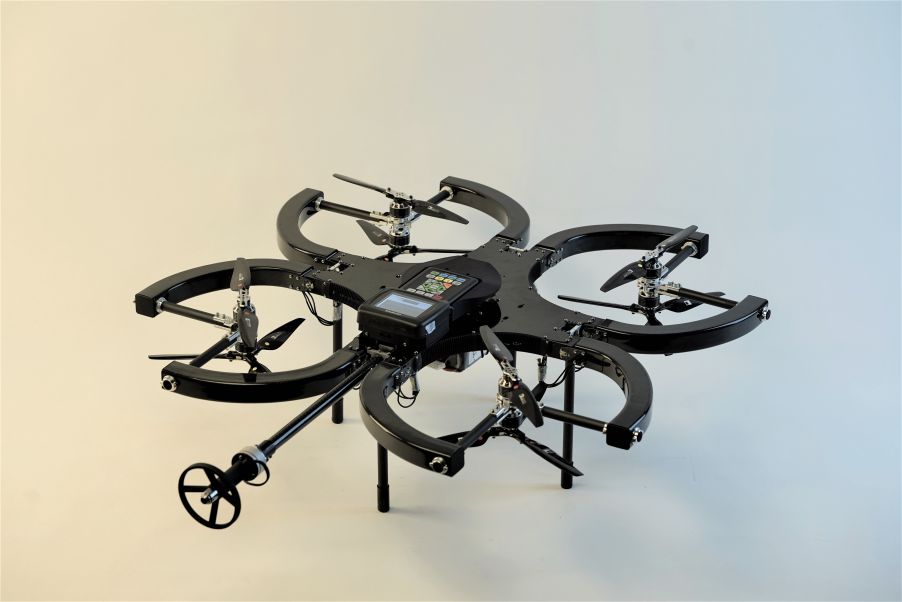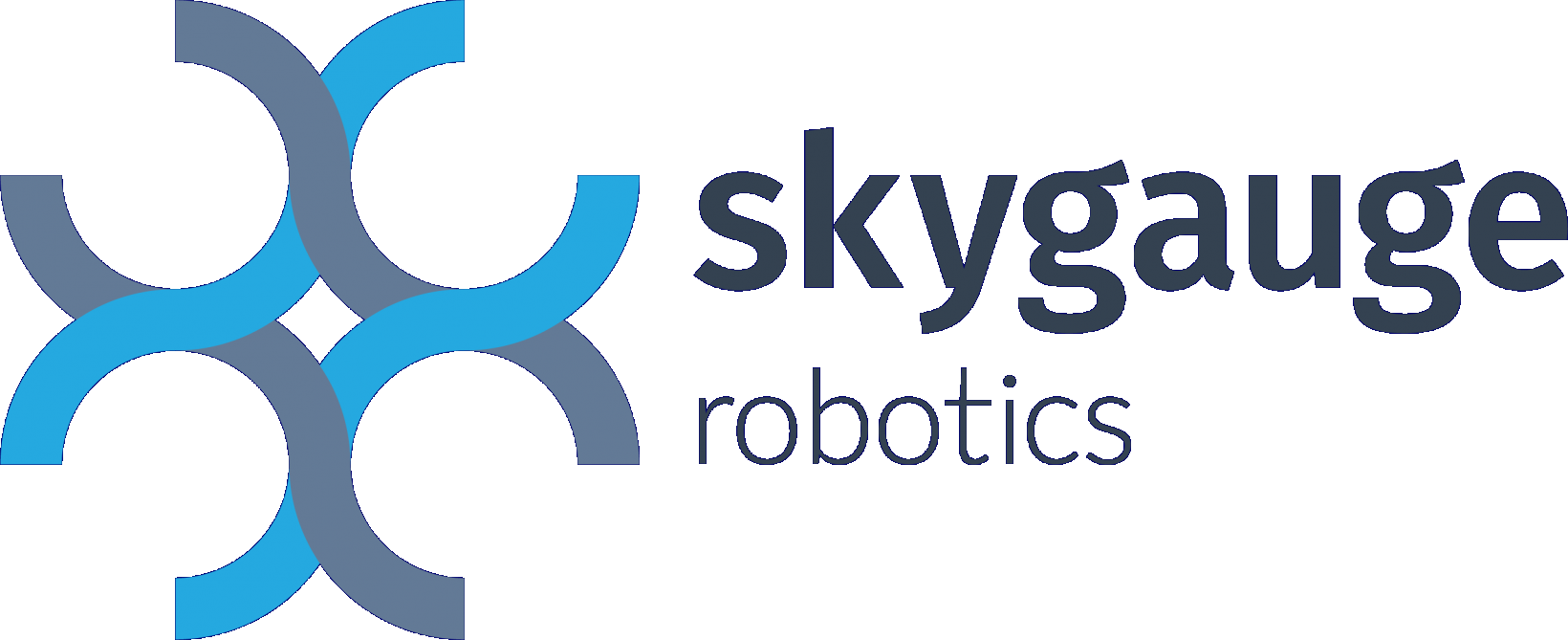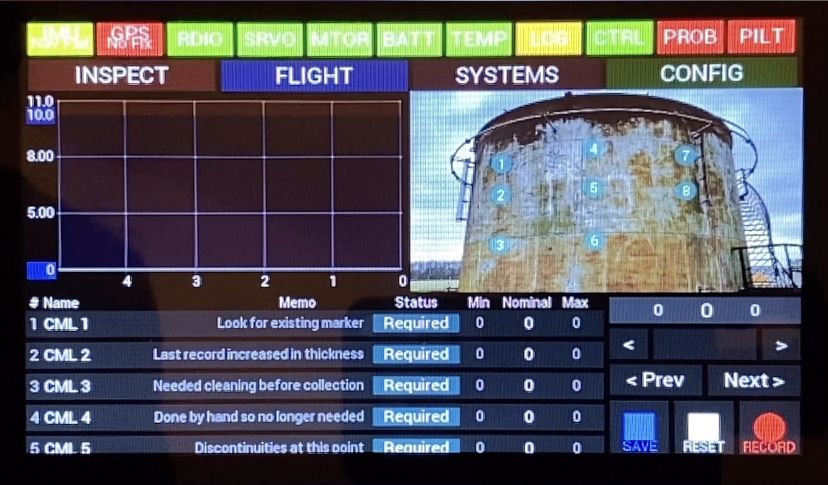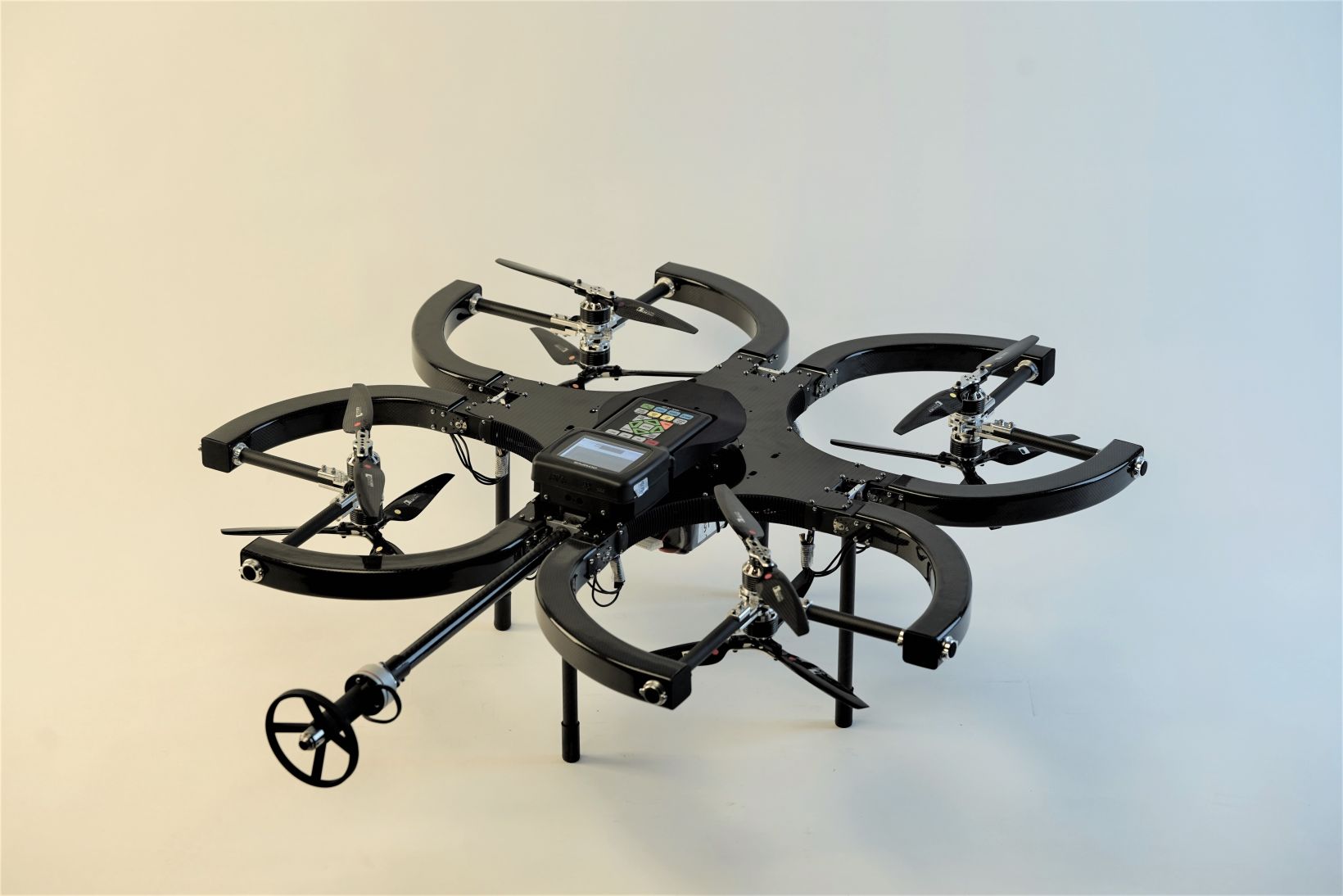This post features the 38DL PLUS™ ultrasonic thickness gauge, which has been replaced with the 39DL PLUS™ model. Please refer to the 39DL PLUS web page for the latest information on its features and capabilities.
Is there a safer way? As robotics continue to advance and revolutionize the way we work—the answer can be found by looking for the latest technology in the skies: ultrasonic drones.
The Benefits of Drone Inspection for NDT Professionals Working at Heights
Unmanned aerial systems (more commonly known as drones) provide NDT experts across industries with a unique aerial perspective. This viewpoint can enable easy access to remote or inaccessible areas without compromising the pilot’s safety. Drones give NDT experts a fast, accurate way to perform inspections while reducing operational costs and minimizing safety risks.
Paired with photography and video recording, a drone can help NDT experts perform a broad range of surveying and inspection services safely and sustainably.
Designing a Drone for Ultrasonic NDT Inspection at Heights
Skygauge Robotics, based out of Toronto, Canada, provides drones to inspection teams that service oil and gas, infrastructure, offshore, telecom, and much more. Notably, their robotics team has produced a unique drone solution for safer, faster, and more cost-effective UT and visual inspections: the Skygauge.
The Skygauge is an ultrasonic thickness gauge on a drone designed for both visual and wall thickness inspection. Instead of having workers potentially compromise their safety on ropes, boom lifts, and scaffolding for industrial inspections, the Skygauge lets workers stay on the ground while the drone performs inspections in hazardous locations.
Watch the video below to see the Skygauge drone in action:
How Does Ultrasonic Drone Inspection Work?
The Skygauge comes integrated with our 38DL PLUS™ ultrasonic thickness gauge. The drone is outfitted with a D790-SM dual transducer and can make contact with surfaces for testing to measure metal thickness and ignore paint coatings.
Nikita Iliushkin, the Cofounder and CEO of Skygauge Robotics, explained how the setup works.
“The 38DLP is an industry-standard ultrasonic thickness gauge using sound waves to measure wall thickness,” Nikita said. “The probe can be mounted on the drone at different angles to contact surfaces above or below a structure.”
The general workflow of the Skygauge drone is divided into three main categories: site acquisition, flight path planning, and post-analysis. Before inspecting the structure in question, workers must check that the surroundings around the inspection area are clear to ensure safe operation.
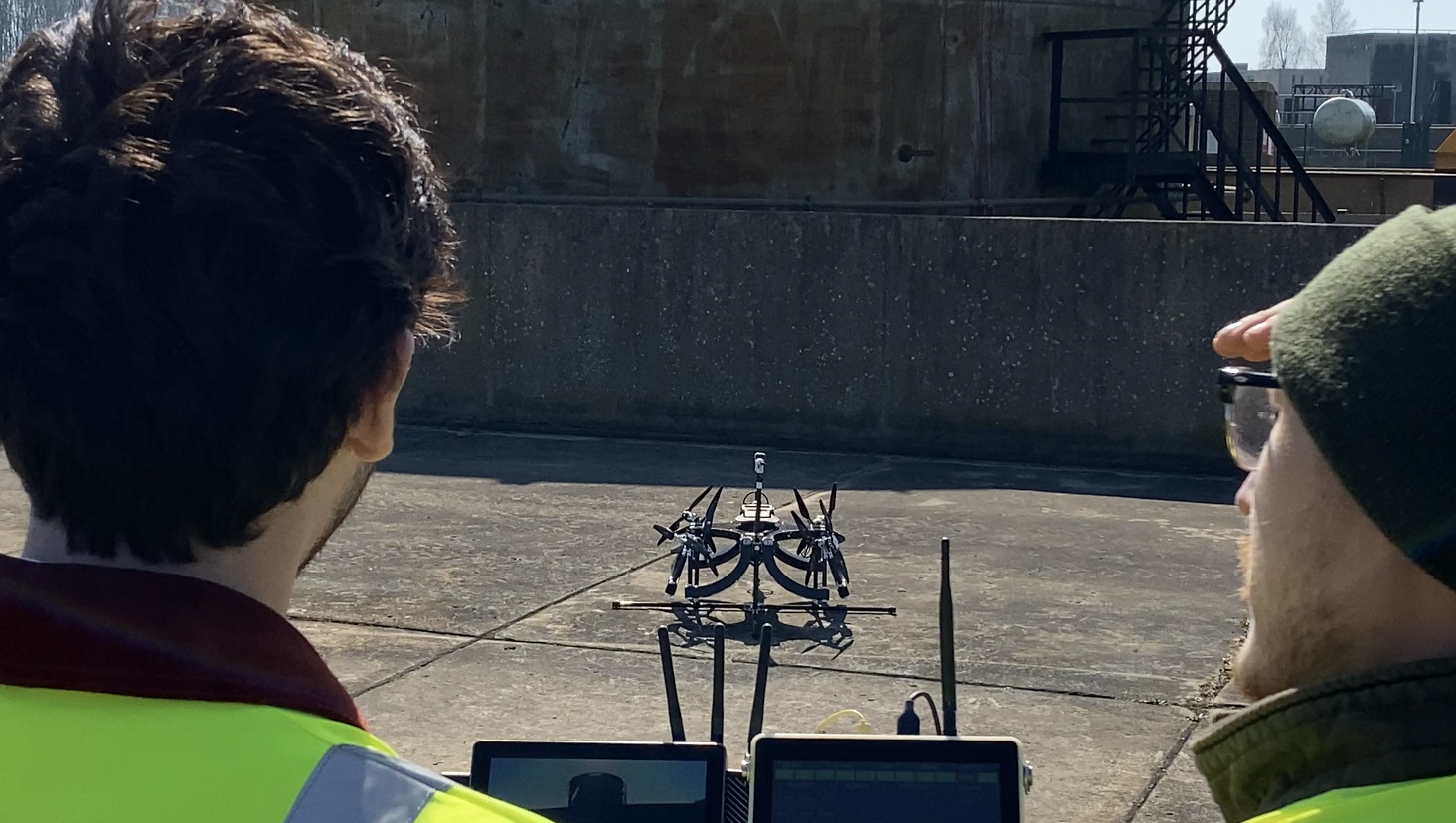 | 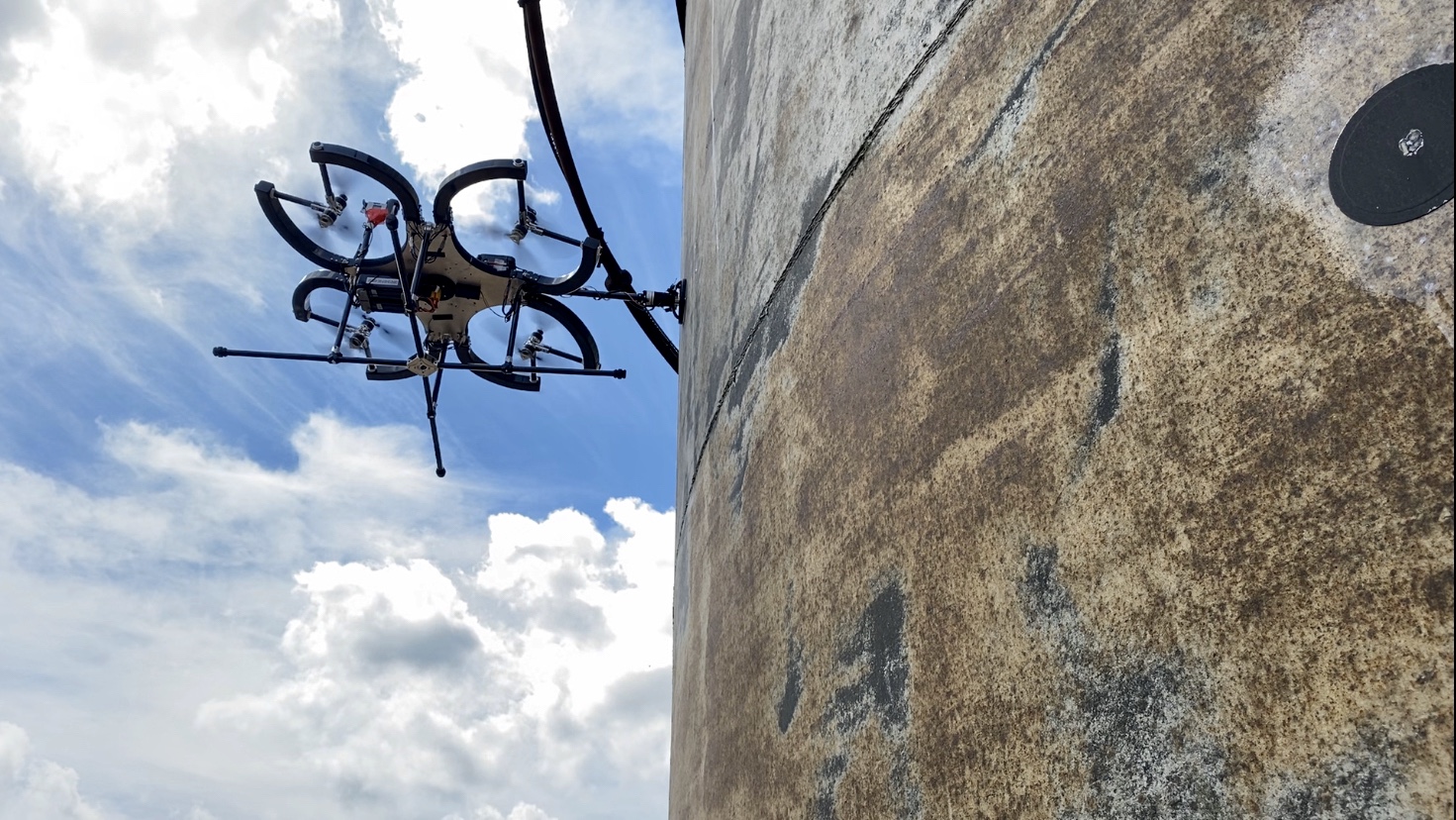 |
Workers stay on the ground while the Skygauge drone performs inspections in hazardous locations.
“The Skygauge takes consistent metal wall thickness readings over time (e.g., every 6 months), to find if the metal wall of a pipe, pressure vessel, or storage tank is getting thinner,” said Nikita. “If the wall gets too thin, that’s an indication that maintenance needs to be performed.”
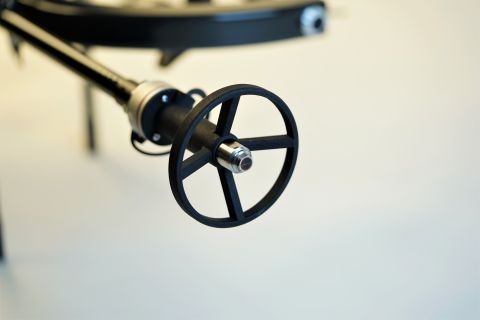 | 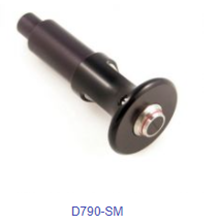 |
The Skygauge drone (left) integrates a D790-SM dual transducer (right); the system can dispense couplant. The commonly used D790 series transducers are used to perform echo-to-echo measurement and can be used on surfaces as hot as 500 °C or 930 °F with the appropriate high-temperature couplant.
The drone uses a force-sensing probe to apply the exact amount of force needed to take thickness readings and maintain surface contact for the duration of the scan. The design of the Skygauge permits precise flight, force contact, wind resistance, and angled inspections.
“The drone design incorporates thrust vectoring, allowing it to thrust in any direction without disturbing the frame,” said Nikita. “The drones can tilt their rotors to fly closer to structures to conduct inspections with greater stability.”
Using the Skygauge drone to access difficult areas, NDT inspectors can evaluate structures and gather comprehensive data that would have taken several days using traditional access methods.
For inspection points at heights or other difficult-to-reach locations on capital-intensive assets such as offshore boats, ships, and freight, oil and gas refineries, and wind turbines, Skygauge Robotics estimates that their drone solution can perform UT inspections 5–10x faster than boots on the ground (or in this case, boots in the air).
“The system can enable two inspectors to complete a two-week job in two days, reducing time on-site by 80%,” said Nikita.
The Dream Team—How NDT Inspectors and Drones Can Work Together
Today, drones are being adopted to improve manual tasks across industries. Using drones for NDT inspection opens a wide range of possibilities that combine the drone’s mobility with different testing methods. The drone inspections can deliver test data on various oil and gas industry properties to identify defects and, in turn, reduce the rate of failures and unplanned shutdowns.
The Skygauge system offers a glimpse into the future of drone NDT inspection; it reduces turnaround time, inspection costs, and increases safety because workers are not exposed to the risks involved in working at heights.
Related Content
Corrosion Thickness Gauging with Dual Element Transducers
Tethered UT Drones: A New Era for Ultrasonic Inspection Work at Heights
Ultrasonic Thickness Gauge Tutorial
